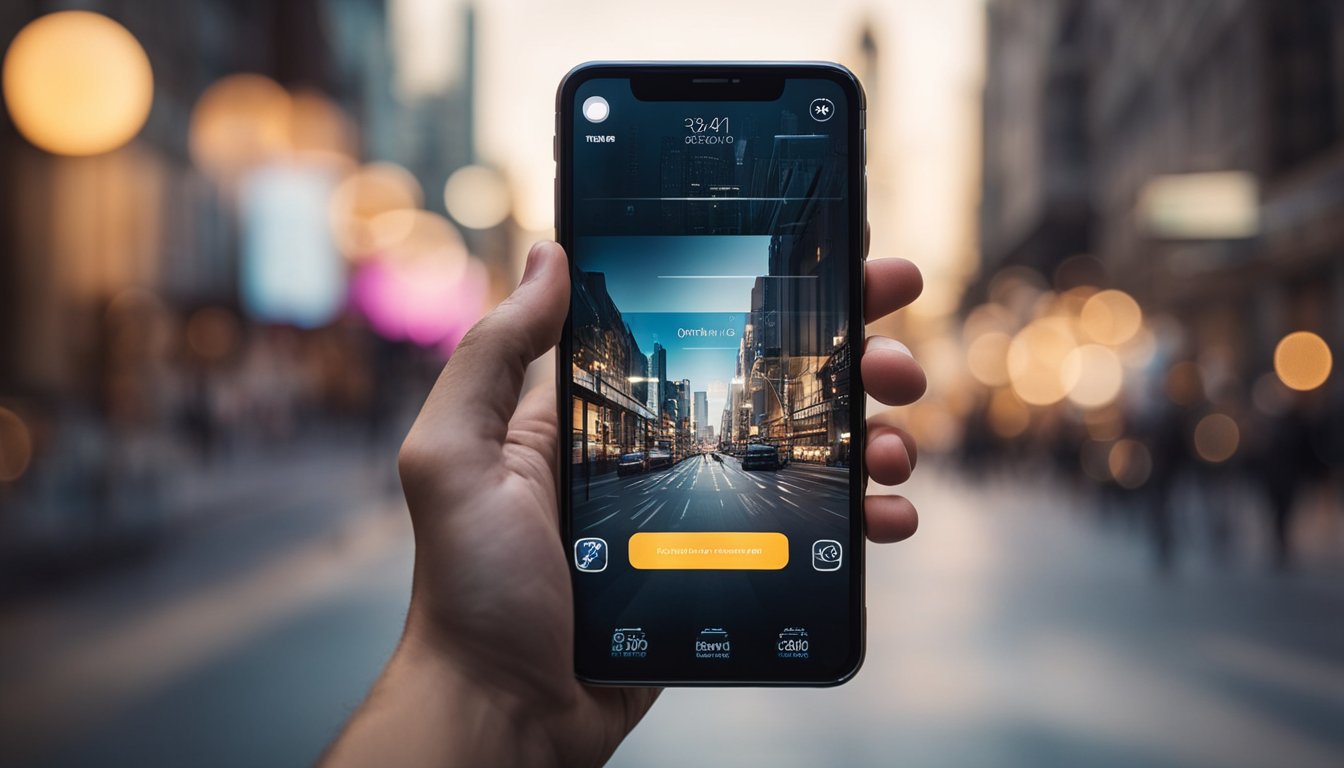Create a Mobile App Optimized for User Retention and Engagement Tips and Strategies
Creating a mobile app that is optimized for user retention and engagement is essential in today's digital landscape. With millions of apps available in app stores, users have a plethora of options to choose from. Therefore, it's crucial to make sure that your app stands out and keeps users engaged.

Mobile app user retention and engagement go hand in hand. Retaining users is not just about getting them to download your app; it's about keeping them engaged and coming back for more. User engagement is the key to building a loyal user base and increasing the chances of users becoming paying customers.
To optimize user retention and engagement, it's important to understand what users want and need. From there, you can create a user experience that is tailored to their preferences and expectations. By providing a seamless and intuitive user experience, you can increase the chances of users sticking around and recommending your app to others.
Key Takeaways
- Understanding user needs is crucial for optimizing mobile app user retention and engagement.
- Providing a seamless and intuitive user experience is key to keeping users engaged.
- Measuring success and continuously improving your app is essential for long-term user retention and engagement.
Understanding Mobile App User Retention and Engagement

As a mobile app developer, it's essential to understand the importance of user retention and engagement. Retaining users is crucial to the success of your app, as it helps to increase your user base and boost revenue. In this section, I will discuss key metrics and strategies for optimizing user retention and engagement.
Defining Key Metrics
To effectively measure user retention and engagement, it's crucial to define key metrics. Below are some of the most important metrics to track:
- Retention Rate: This metric measures the percentage of users who return to your app after their initial download. A high retention rate is indicative of a successful app.
- Churn: Churn is the opposite of retention and measures the percentage of users who stop using your app.
- Active Users: This metric measures the number of users who interact with your app within a specific time frame.
- MAU and DAU: Monthly Active Users (MAU) and Daily Active Users (DAU) are the number of unique users who interact with your app over a month or day, respectively.
- Number of Sessions: This metric measures the number of times users open your app.
- Cohort Analysis: This metric tracks the behavior of specific groups of users over time, enabling you to identify trends and patterns.
Importance of User Retention and Engagement
User retention and engagement are critical to the success of your app. A high retention rate means that more users are returning to your app, which translates to higher revenue and a larger user base. Engaged users are more likely to share your app with others, leading to increased downloads and revenue.
To improve user retention and engagement, you need to understand what users want from your app. This involves analyzing user behavior, such as the number of sessions, time spent in the app, and the features they use most. With this information, you can create personalized experiences that keep users engaged and coming back for more.
In conclusion, understanding key metrics and user behavior is crucial to optimizing user retention and engagement. By tracking these metrics and implementing user retention strategies, you can create a successful mobile app that keeps users engaged and coming back for more.
Optimizing User Experience for Retention

As a mobile app developer, I know that user retention is crucial for the success of any app. To optimize user retention, it is essential to create a seamless onboarding experience, incorporate user feedback, and offer personalization and reward programs.
Designing an Effective Onboarding Flow
The onboarding process is a critical component of the app experience. It is the user's first interaction with the app and sets the tone for their entire experience. A seamless onboarding flow can increase user engagement and retention.
To design an effective onboarding flow, it is essential to keep it simple and straightforward. Users should be able to understand the app's value proposition and how to use it quickly. A step-by-step tutorial or a video tutorial can be helpful in guiding users through the app's features.
It is also crucial to ensure that the onboarding flow is not too long or complicated. Users may lose interest if the onboarding process takes too long or requires too much information. Therefore, it is essential to strike a balance between providing enough information and keeping it simple.
Incorporating User Feedback
Incorporating user feedback is an essential component of optimizing the app experience for retention. User feedback can provide valuable insights into what users like and dislike about the app, as well as what features they would like to see added or improved.
To incorporate user feedback, it is essential to provide users with a way to provide feedback easily. A feedback form or a chatbot can be helpful in collecting user feedback. It is also crucial to respond to user feedback promptly and make changes based on their suggestions.
Personalization and Reward Programs
Personalization and reward programs can also help increase user retention. By personalizing the app experience, users feel more connected to the app, and it becomes a part of their daily routine. Reward programs can also incentivize users to continue using the app.
To personalize the app experience, it is essential to collect user data and use it to provide personalized recommendations and content. For example, a music app can use user listening history to suggest new songs or playlists.
Reward programs can also be an effective way to increase user retention. By offering rewards for app usage, users are incentivized to continue using the app. Rewards can include discounts, free content, or exclusive access to features.
In conclusion, optimizing the user experience for retention requires a seamless onboarding flow, incorporating user feedback, and offering personalization and reward programs. By implementing these strategies, mobile app developers can increase user engagement and retention, ultimately leading to the app's success.
Strategies for Boosting User Engagement

As an app developer, I understand the importance of user engagement. A high engagement rate is crucial for the success of any mobile app. Here are some effective strategies that can help you boost user engagement and retention.
Push Notifications and In-App Messages
Push notifications and in-app messages are powerful tools for keeping your users engaged. With push notifications, you can send timely reminders and updates to your users, even when they're not actively using your app. In-app messages, on the other hand, can be used to deliver personalized content and offers to your users while they're using your app.
However, it's important to use push notifications and in-app messages strategically. Bombarding your users with too many notifications can be annoying and counterproductive. Make sure your messages are relevant, timely, and valuable to your users.
Gamification
Gamification is a popular engagement strategy that involves adding game-like elements to your app. By adding challenges, rewards, and leaderboards, you can make your app more fun and engaging for your users.
However, it's important to strike a balance between fun and functionality. Don't sacrifice the usability of your app for the sake of gamification. Instead, use gamification to enhance the user experience and make your app more enjoyable to use.
Deep Linking
Deep linking is a technique that allows you to link to specific content within your app. By using deep links, you can direct your users to relevant content and features, increasing the chances that they'll engage with your app.
Deep linking can also be used to personalize the user experience. For example, you can use deep links to direct users to content that's relevant to their interests or previous behavior within your app.
In conclusion, there are many strategies that can help you boost user engagement and retention. By using push notifications and in-app messages strategically, adding gamification elements, and implementing deep linking, you can create a more engaging and personalized user experience.
Measuring Success and Continuous Improvement

As a mobile app developer, I know that creating an app that is optimized for user retention and engagement is crucial for its success. However, it is equally important to measure the effectiveness of the app to ensure that it is meeting the needs of its users. In this section, I will discuss how to measure success and continuously improve your app for maximum user retention and engagement.
Analyzing Retention and Engagement Metrics
One of the most important metrics to analyze is retention rate. This metric measures the percentage of users who return to your app after their first visit. A high retention rate indicates that your app is providing value to its users and keeping them engaged. Other important metrics to consider include session length, session interval, and conversion rate. By analyzing these metrics, you can gain insights into how users are interacting with your app and identify areas for improvement.
Segmenting Your Audience
Segmenting your audience is another important step in measuring app success. By dividing your users into groups based on demographics, behavior, or other characteristics, you can gain a better understanding of their needs and preferences. This information can be used to tailor your app to specific user groups, increasing their engagement and retention. For example, if you find that a certain demographic is more likely to use a specific feature of your app, you can highlight that feature to that group of users.
Continuous App Development
Continuous app development is the process of continuously improving your app based on user feedback and data analysis. By making small, incremental changes to your app, you can improve its functionality and user experience over time. This approach allows you to respond quickly to user needs and preferences, ensuring that your app remains relevant and engaging. It is important to have a process in place for collecting user feedback and analyzing app metrics to guide your app development process.
In conclusion, measuring success and continuously improving your app is crucial for maximizing user retention and engagement. By analyzing retention and engagement metrics, segmenting your audience, and engaging in continuous app development, you can create an app that meets the needs of its users and keeps them coming back for more.
Frequently Asked Questions

What are some effective ways to increase user engagement on a mobile app?
There are many ways to increase user engagement on a mobile app, including:
- Personalization: Tailoring the app experience to the user's preferences and behavior.
- Gamification: Adding game-like elements to the app to make it more engaging and fun.
- Push Notifications: Sending relevant and timely notifications to keep users engaged.
- In-App Messaging: Providing users with a way to communicate with other users or the app's support team.
- Social Integration: Allowing users to connect with friends and share their app activity on social media.
How can you measure and improve app retention rate?
To measure and improve app retention rate, you can:
- Track user behavior: Use analytics tools to monitor user activity and identify areas for improvement.
- Offer incentives: Encourage users to keep using the app by offering rewards or discounts.
- Improve onboarding: Make the app easy to use and understand from the beginning.
- Address user feedback: Listen to user feedback and make changes accordingly.
- Test and iterate: Continuously test and refine the app to improve user retention.
What are some proven strategies for optimizing a mobile app's user retention?
Some proven strategies for optimizing a mobile app's user retention include:
- Providing value: Ensure the app provides real value to the user and solves a problem for them.
- Simplifying the user experience: Make the app easy to use and understand.
- Offering incentives: Encourage users to keep using the app by offering rewards or discounts.
- Personalizing the experience: Tailor the app experience to the user's preferences and behavior.
- Building a community: Encourage users to connect with each other and engage with the app.
What are the most important engagement metrics to track for a mobile app?
The most important engagement metrics to track for a mobile app include:
- Daily Active Users (DAU): The number of unique users who engage with the app on a daily basis.
- Monthly Active Users (MAU): The number of unique users who engage with the app on a monthly basis.
- Session Length: The length of time users spend in the app during each session.
- Retention Rate: The percentage of users who return to the app after their first use.
- Churn Rate: The percentage of users who stop using the app over a given time period.
How can you use user feedback to improve app retention and engagement?
To use user feedback to improve app retention and engagement, you can:
- Listen to user feedback: Encourage users to provide feedback and take their suggestions seriously.
- Prioritize feedback: Identify the most common and impactful feedback and prioritize it for action.
- Act on feedback: Make changes to the app based on user feedback and communicate those changes to users.
- Follow up: Check in with users after making changes to ensure the changes addressed their concerns.
What are some best practices for designing an engaging and retention-focused mobile app?
Some best practices for designing an engaging and retention-focused mobile app include:
- Understanding your audience: Know who your users are and what they want from the app.
- Keeping it simple: Make the app easy to use and understand.
- Providing value: Ensure the app provides real value to the user and solves a problem for them.
- Personalizing the experience: Tailor the app experience to the user's preferences and behavior.
- Continuously testing and iterating: Continuously test and refine the app to improve engagement and retention.

We are committed to delivering a new level of automation that will help organizations save time, money, and staffing resources.
 WRITE FOR US!
WRITE FOR US!
